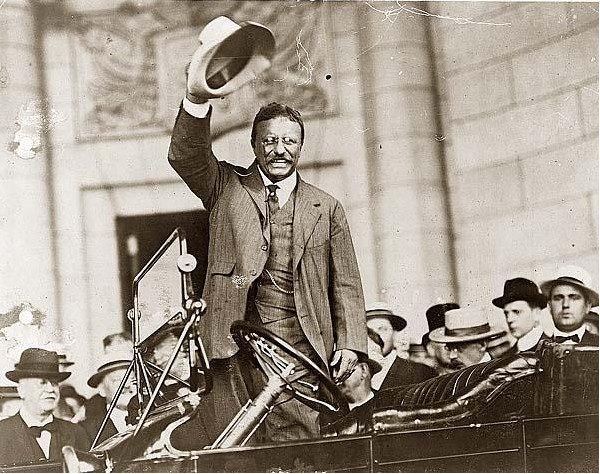Any idea where "Panama Hats" are actually from?

I'll give you one guess. It starts with Ec-. . . . and ends with -dor.
Bien hecho, good job . . it is, in fact, Ecuador!
We just returned home from a lovely journey back to southern Ecuador with our recent visitors, GG (aka Gwen) and Jacki. While in Cuenca, we visited the Museo del Sombrero de Paja Toquilla, a small museum and artisan craft shop in the historic downtown. Not only did GG get a beautiful toquilla straw hat, we also bought one for Jonah's 8th birthday (shhhh, he doesn't know yet), and we learned about the curious history of the long ago misnamed "Panama Hat".
After doing some research, I found additional chapters of the long history, which I have tried to piece together here. I ask for a preemptive pardon for possible historical inaccuracies; it seems there is disagreement about some parts. One thing everyone can call agree on is that Panama Hats were never actually made in Panama.
Interestingly, there is archaeological evidence that the predecessors to modern toquilla straw hats-- now universally called Panama Hats -- date back to the indigenous people of the pre-Colombian period of Ecuador, as long ago as 500 to 3500 BC. At the very least, the toquilla palms and the weaving skills of indigenous coastal Ecuadorians are long-established.
The raw material used to make the hats, carludovica palmata, aka toquilla straw, is a plant native to Ecuador. It is grown in the Coast and Amazon regions, in the provinces of Manabí, Guayas, Esmeraldas and Morona Santiago. Its fan-shaped leaves can reach up to 3 meters long. The outer side of the leaves is green; the part used to make the hats, the center, is ivory.
When Spanish conquerors arrived at the Ecuadorian coast in the 1530s, they found indigenous people wearing hand-woven straw hats designed to protect their necks and ears from the fierce equatorial sun. These headdresses were shaped less like modern hats and more like habits worn by nuns or widows. They were all woven from the leaves of fine Toquilla Palm, a domestic monocot* that grew around modern day Montecristi and Jipijapa, along the coast of Ecuador.
 |
| Toquilla palm (greatbigcanvas.com) |
 |
| an indigenous coastal woman weaving a toquilla hat |
In 1855, at the World Exposition in Paris, Phillipe Ramoudi, a Frenchman living in Panama, exhibited the toquilla straw hat to Europeans, who were impressed with the fine weaving. This was just the beginning of a worldwide love affair with the toquilla straw hats. Rumor has it that Ecuador was not otherwise present at this global exposition, so the hats were literally displayed under the Panama flag.
In 1859, the Spanish infantry adopted the toquilla straw hat as part of their uniform at the behest of Spanish Queen Isabella II. Around the same time, the hats became popular as durable, easily-transported sun protection for people rushing for gold in the Western United States.
There are two leading theories as to why toquilla straw hats are now universally called Panama Hats. The first is that large numbers of American workers on the construction of the Panama Canal wore these light and durable hats to protect their heads from the hot tropical sun. They purchased them inexpensively at local markets in Panama (though they had been imported from Ecuador), and many workers took these hats home with them from Panama. This led to the misnomer "Panama Hat".
 |
| photo credit: https://kdorfzaun.com/toquilla-straw-panama-hats/ |
The second theory is that because the hats were exported via Panama to North America and Europe, they sported an official "customs stamp" from Panama. Without any label identifying them as "hecho en Ecuador", they became known everywhere as Panama Hats. And the name stuck.
Either way, the misnomer was codified in 1906 when then-President Theodore Roosevelt was photographed visiting the Panama Canal wearing the famous Panama Hat. This photo of him wearing the hat was published in the NY Times.
As an important aside, there actually does exist an original Panama Hat, which is not unlike the toquilla straw hat, but is distinct. The Smithsonian magazine wrote an interesting short history of the Panama Hat HERE. The Panamanian hat is called "the painted hat" or the pinta'o. Unlike the Ecuadorian hat, it is black and white hat (two palms woven together) and is not mass produced.
 |
| The Panamanian "pinta'o" |
Today, in Ecuador, the Ecuadorian Paja Toquilla Hats (forever destined to be mis-known worldwide as Panama Hats) are produced only in Ecuador -- in the Manabi Province, in Jipijapa and Montecristi, and the Cuenca area, where a smart businessman moved several craftsmen in the late 1800s. They are always produced in small factories and family businesses.
Ecuadorian Paja Toquilla hat quality ranges from simple to fino (fine) to superfino (super fine), and prices range from $10 USD to thousands of dollars. The quality of the hat was originally based on the number of weaves per square inch. The tightest woven hats are said to be able to hold water and, when rolled, a fine hat can fit through a wedding ring. They can take between 1 day and 8 months to produce.
_________
*Because this term "monocot" keeps coming up on our highly recommended Nature Seek App, I am placing the definition of Monocot here for future reference. A monocot is a group of flowering plants belonging to the class Liliopsida (or Monocotyledonae) of Angiospermae (angiosperms), characterized by having only one cotyledon in the seed and an endogenous manner of growth. The angiosperms (aka flowering plants) can either be a monocotyledon (or monocot) or a dicotyledon (or dicot) according to the number of cotyledons in their seeds. Examples of monocot plants are the palms, grasses, orchids, and lilies.
References:
https://responsibletravelsa.com/en/blog/ecuadorian-handicrafts/the-panama-hat-how-a-wrong-name-can-lead-to-success
https://ecuadorianhands.com/en/blog/post/true-history-of-montecristi-hat-panama-hat.html
https://globalvoices.org/2016/01/27/dont-be-confused-the-panama-hat-is-an-old-ecuadorian-tradition/
http://www.allpahats.com/web/history
https://www.smithsonianmag.com/travel/the-real-panama-hat-180980525/
















Comments
Post a Comment